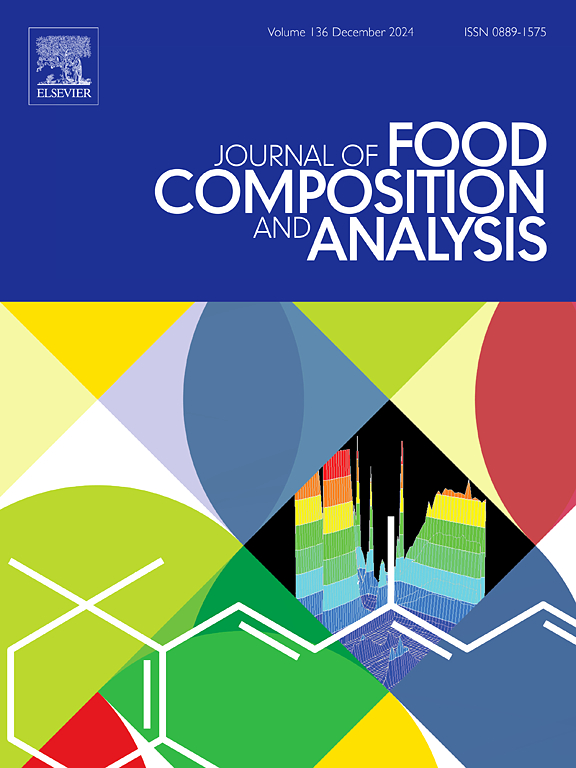Multi-factor optimization and application of orbital shaker assisted dispersive magnetic solid phase microextraction of silver in various food samples
IF 4
2区 农林科学
Q2 CHEMISTRY, APPLIED
引用次数: 0
Abstract
An orbital shaker assisted dispersive magnetic solid phase microextraction (OSA - dMSPµE) method was developed for the determination of silver in food samples using flame atomic absorption spectrometry (F AAS). New cross-linked polylinoleic acid-polystyrene- polydimethylsiloxane graft copolymer (PLinaS-PDMS) was synthesized and used as an adsorbent encapsulated with magnetic Fe3O4 nanoparticles. The adsorbent was characterized by FT-IR NMR, DSC, SEM-EDX, BET techniques. Adsorbent capacity was also determined as 34.8 mg g−1. Multi-factor optimization of the OSA - dMSPµE method was performed. The limit of detection (LOD) and limit of quantification (LOQ) were 0.4 µg L−1 and 1.2 µg L−1, respectively. The linearity was 1.2–112 µg L−1. Relative standard deviation percentage (RSD%) for intraday and interday was found to be 3.2 % and 5.7 %, respectively using 100 µg L−1 Ag solution. The preconcentration factor was determined as 125. The method was applied to certified reference material, t test was used and quantitative results (94 %) were obtained.
求助全文
约1分钟内获得全文
求助全文
来源期刊

Journal of Food Composition and Analysis
工程技术-食品科技
CiteScore
6.20
自引率
11.60%
发文量
601
审稿时长
53 days
期刊介绍:
The Journal of Food Composition and Analysis publishes manuscripts on scientific aspects of data on the chemical composition of human foods, with particular emphasis on actual data on composition of foods; analytical methods; studies on the manipulation, storage, distribution and use of food composition data; and studies on the statistics, use and distribution of such data and data systems. The Journal''s basis is nutrient composition, with increasing emphasis on bioactive non-nutrient and anti-nutrient components. Papers must provide sufficient description of the food samples, analytical methods, quality control procedures and statistical treatments of the data to permit the end users of the food composition data to evaluate the appropriateness of such data in their projects.
The Journal does not publish papers on: microbiological compounds; sensory quality; aromatics/volatiles in food and wine; essential oils; organoleptic characteristics of food; physical properties; or clinical papers and pharmacology-related papers.
 求助内容:
求助内容: 应助结果提醒方式:
应助结果提醒方式:


